Backstage with Matthew: A Safe and Stylish Return to Live Opera
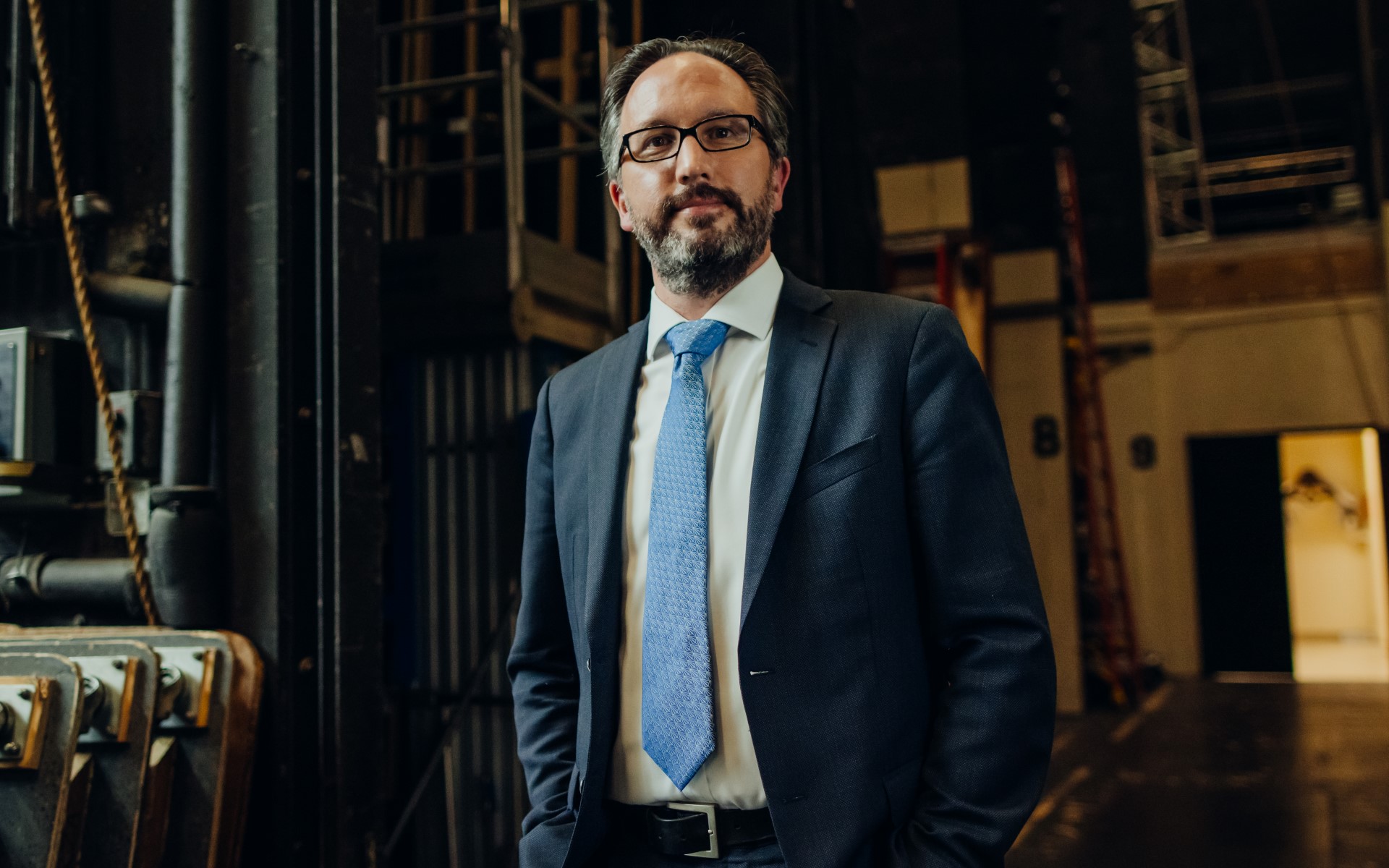
In so many ways, this is a time of reinvention and innovation for the arts as we all work to find new ways to share creativity with audiences. One of the great innovative journeys this year has been the development of our new Singer Mask with Dr. Sânziana Roman, a thyroid surgeon at UCSF who is part of our team of six doctors meeting each week to help us get back to live performances. Dr. Roman is also a trained opera singer and early on in the pandemic she knew that we would need a better mask to enable singers to sing. She started working with our Costume Shop, specifically Amy, to invent a new mask that would allow for much greater jaw movement, air flow, and safety than is possible with regular masks.
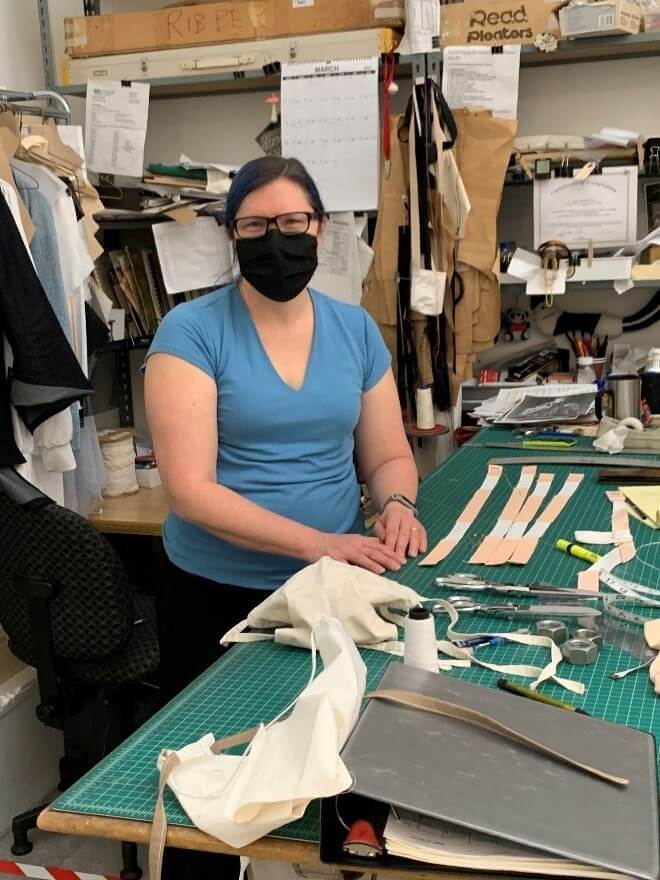
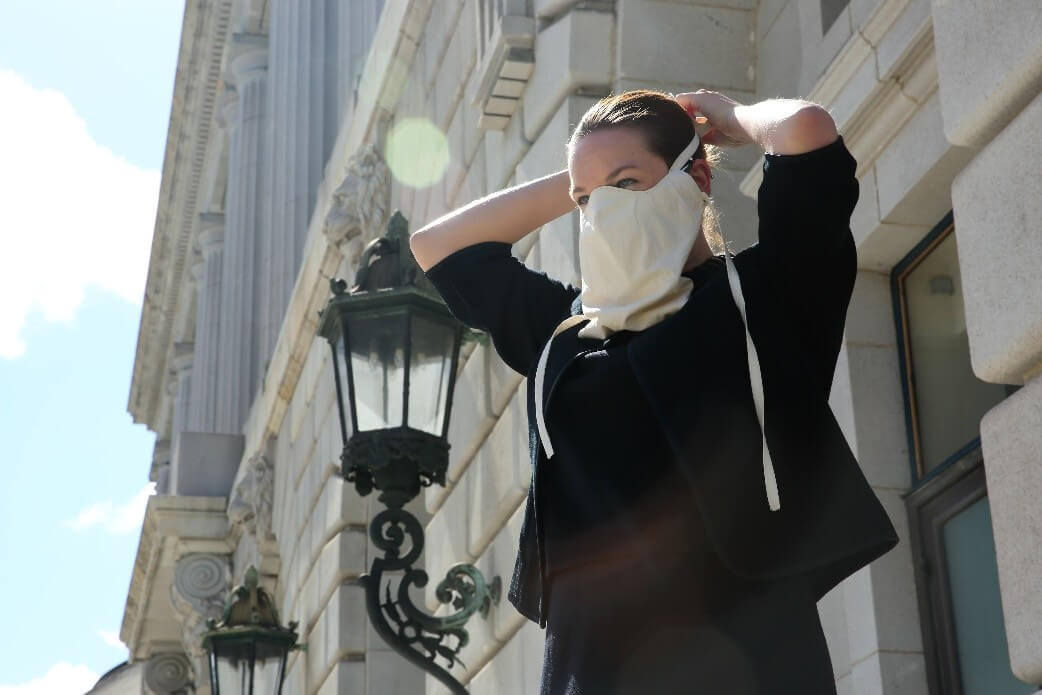
You can find a great feature from the SF Chronicle on the new masks here.
Dr. Roman began by mocking up a prototype using parts from home including an old apron and an N-95 mask, working to keep the mask further away from the face and to create a bigger enclosed area than is possible with regular masks. The Costume Shop took the prototype and began adapting the mask techniques that they had developed in making over 10,000 masks for frontline workers, using Kona cotton and the pellon filtration material that you can read about in an earlier edition of Backstage with Matthew. There were two key problems to solve: how to keep the mask off the face, and how to make it washable. The answer was found in Rigilene boning —the kind of material that we often use to give structure to corsets and non-standard costume pieces.
You can see here the internal structure of the Singer Mask, with the boning creating a more rigid area of the mask that sits away from the face. The vertical boning was added later to help with the washability of the mask — without this, the mask was wrinkling up when washing, but this solved the problem.
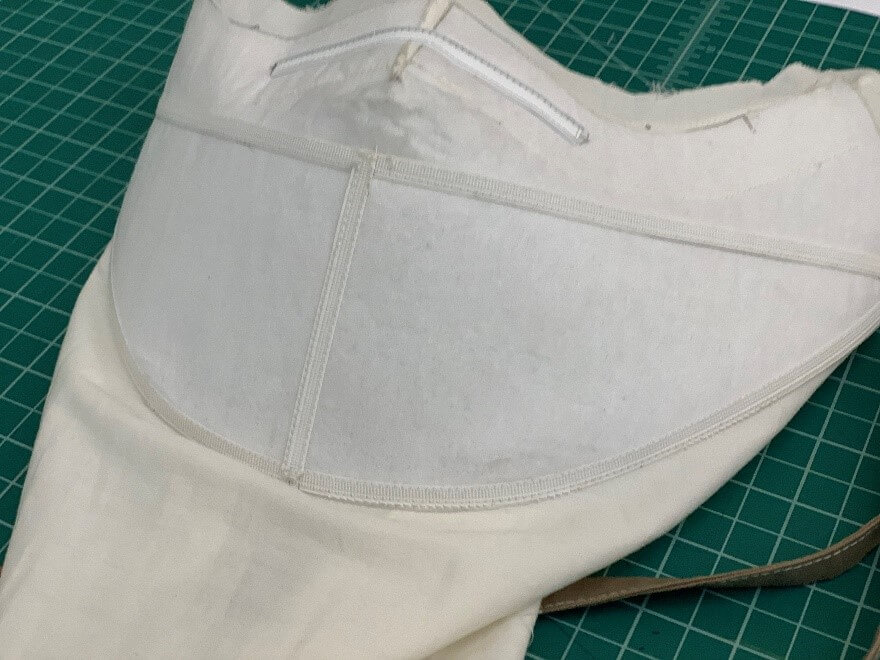
Various features were gradually added in the development of the mask, such as the nose wire which is similar to the strips that you use to close coffee bags! Another feature is a felt material that is used to both cushion the nose area, but also create a greater seal by contouring more effectively to the face.
One of the big problems to solve was how to create an opening in the mask that could allow both increased airflow and the chance for a singer to drink without taking the mask off. The Singer Mask seals with a cinch device around the lower jaw, and has an opening that extends down vertically, allowing it to be opened at the bottom while maintaining strong safety protection.
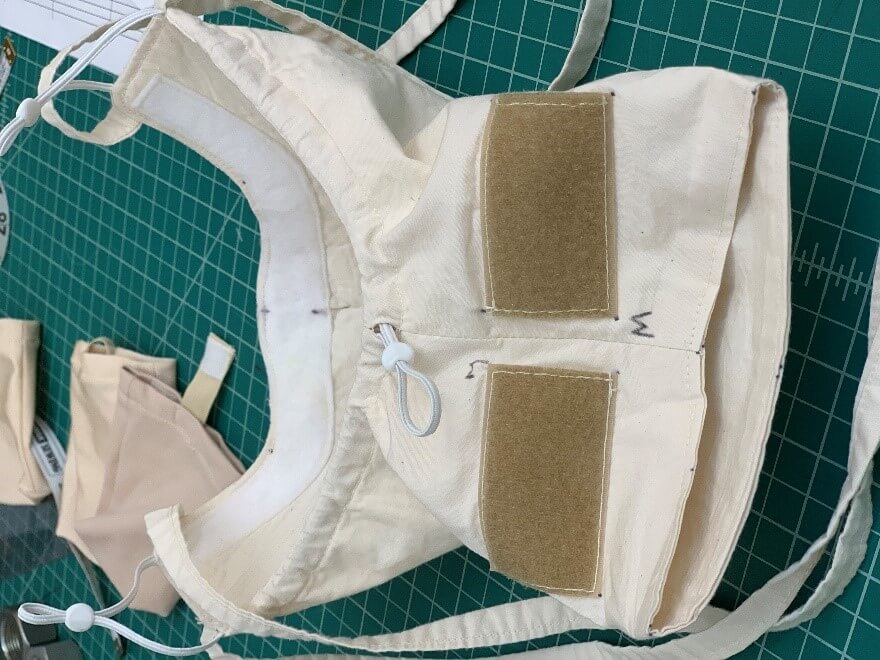
A critical feature of our mask, unlike any other singer mask that has been developed, is that our mask has being scientifically tested. We worked with UC Davis to rigorously test the mask on a number of occasions and received extraordinary results. It is performing on par with the gold-standard N95 mask, thanks to a combination of the design and the materials being used.
The Costume Shop is currently making a stock of masks for use in The Barber of Seville where they will be used as rehearsal masks for all the singers (they will take the masks off for the performances). UCSF and San Francisco Opera have a patent pending on the mask, and we are now working to try and find a manufacturer who can make them at scale for other companies. The potential uses are huge – not only for singers, but also for sports and classrooms— anything where greater aerosol production and increased comfort is a concern.
Dr. Roman and Amy are the official inventors of the mask and, as Amy notes, she never expected to be involved in anything that would list her as inventor! But she is so happy to have been involved in this and is looking forward to seeing the masks in use as we begin The Barber of Seville rehearsals very soon.
It has been a process of innovation and discovery that is allowing us to make music once again, and I am so grateful to Dr. Roman, Amy, and everyone involved in creating such an extraordinary mask to support singing.
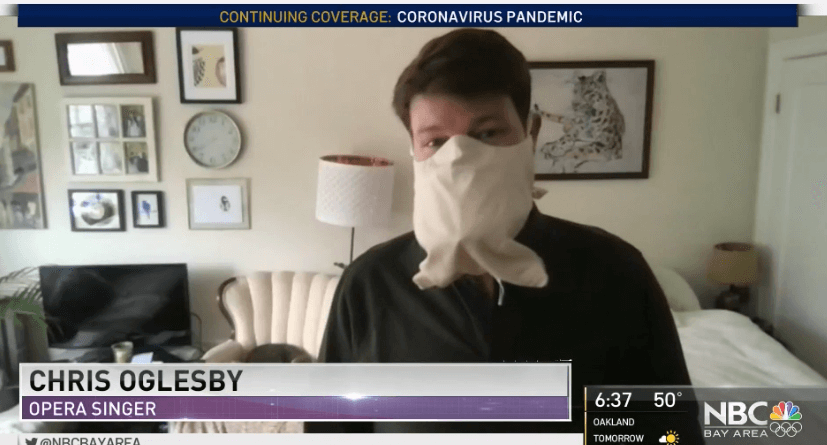
Mask-making is just a part of what is happening in the Costume Shop at the moment. While in the midst of making masks, Amy was also working on building costume pouches to fit the sound equipment that the singers will need to wear in Barber of Seville —not for amplification but to bring the sound to you through your car radio. Amy was also working on a beautiful dress for Rosina – a playful, colorful late 18th century dress designed by our Costume Designer, Jessica Jahn.
There is so much joy and life in Jessica’s designs for Barber. I feel the same energy and exuberance in what Jessica is creating as I felt seeing the costume designs in the recent Netflix series Bridgerton. The prints, the colors, the sense of what clothes can do to uplift and transport. As I walked around the Costume Shop and saw what people were working on, I found myself grinning with happiness at what it will mean to see the interaction of singers, their characters and their costumes once again! In fact, Amy had just fit one of the performers for a costume and said how amazing it was to do a fitting once again—the first in over a year.
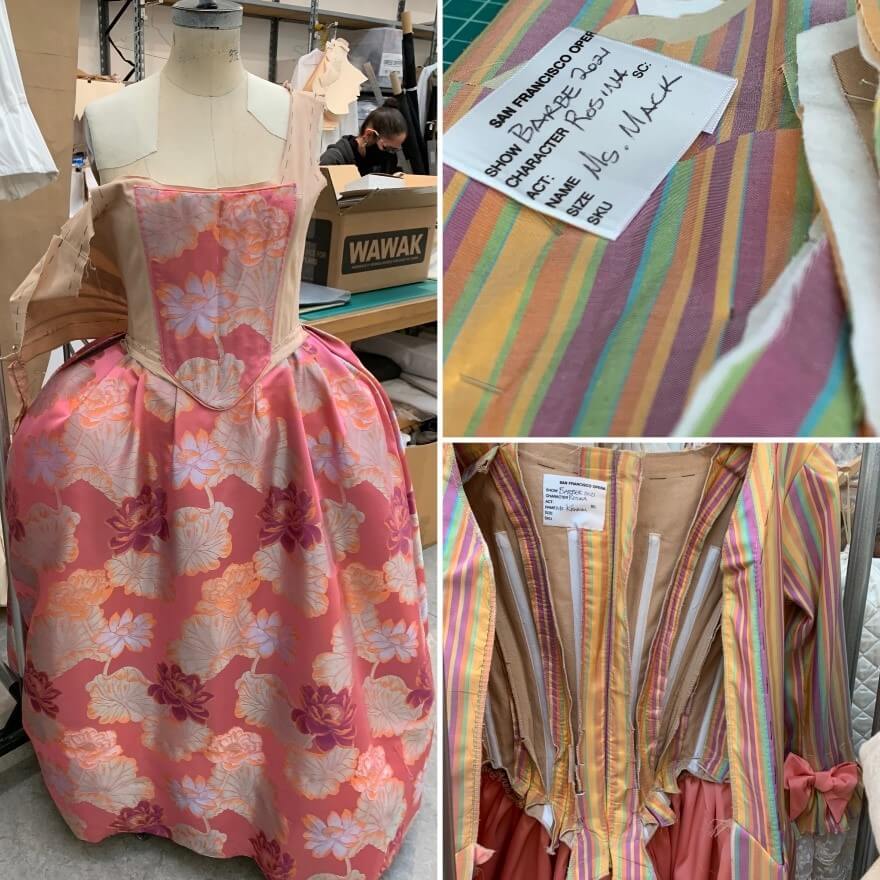
This Barber of Seville is coming together at record-breaking speed and to help with that, we are using some pre-existing items from stock, including pieces for cover costumes and for some of the men’s costumes (we have more period stock for men than women). You can see here Kristin Tracy working on Rosina’s cover costume —a dress originally from Un Ballo in Maschera. As is sometimes the case on the mainstage, cover costumes are not always the same design as the main character’s costume—we have two Rosinas already with Daniela Mack and Laura Krumm. Each will have their own costume and then Simone McIntosh who is covering will have this piece adapted from stock, should she need it.
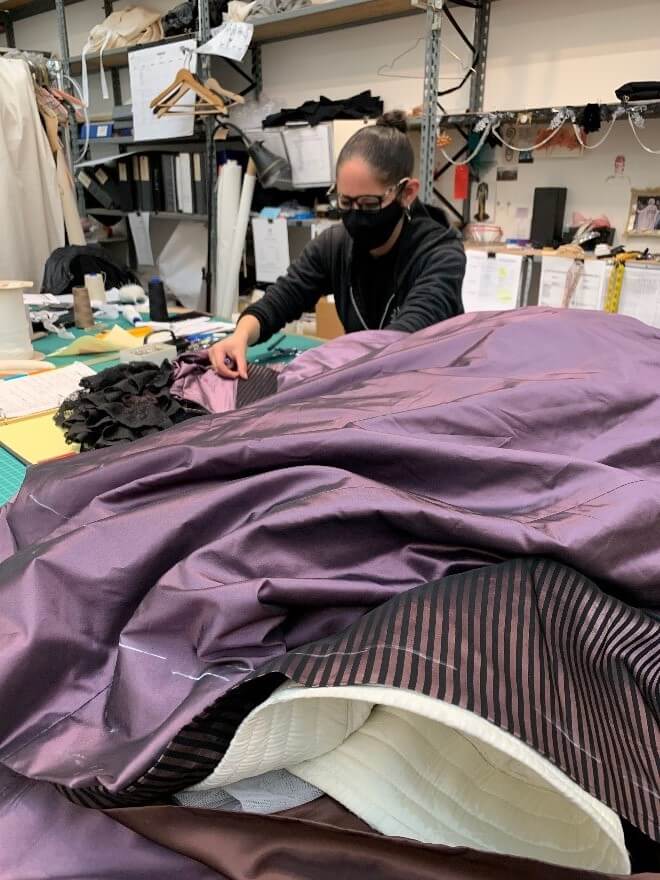
Count Almaviva (played by Alek Shrader) will have a new costume made by Master Tailor Sally Thomas, in this fabulous turquoise fabric, along with accent fabrics that you see here.
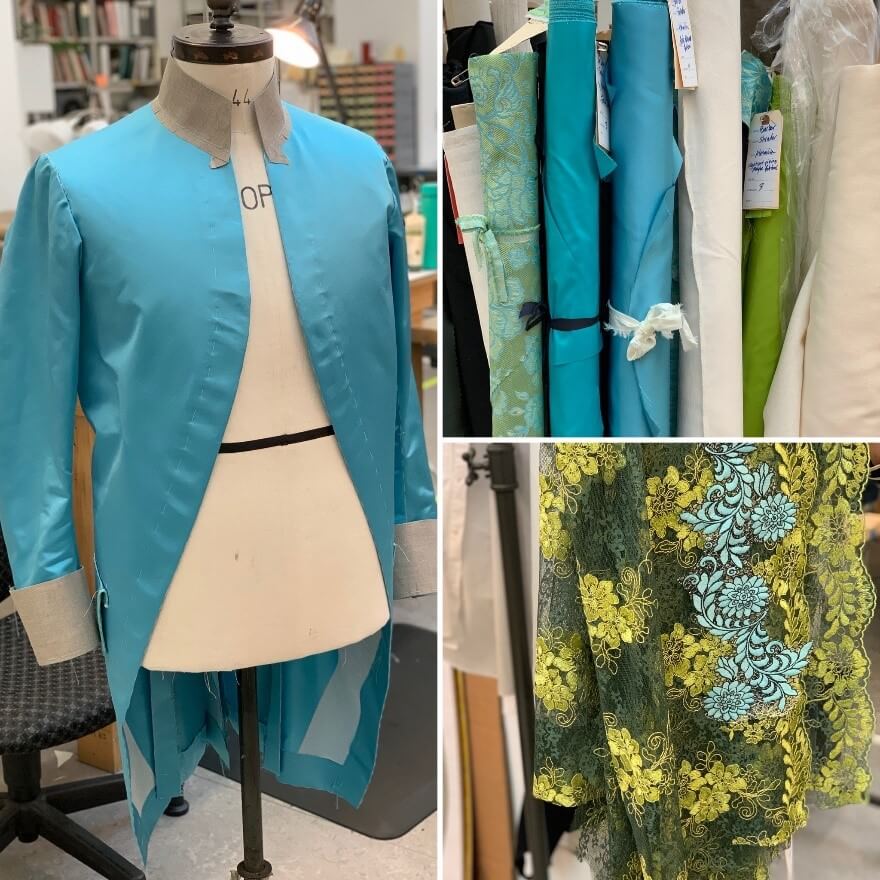
Our Men’s Draper Santiago Suanes is working on a new black frock coat for Don Basilio (played by Kenneth Kellogg), while Emma Lehman is working on adapting a costume from a past Manon Lescaut production which will become the costume for Doctor Bartolo (played by Philip Skinner), here in orange.
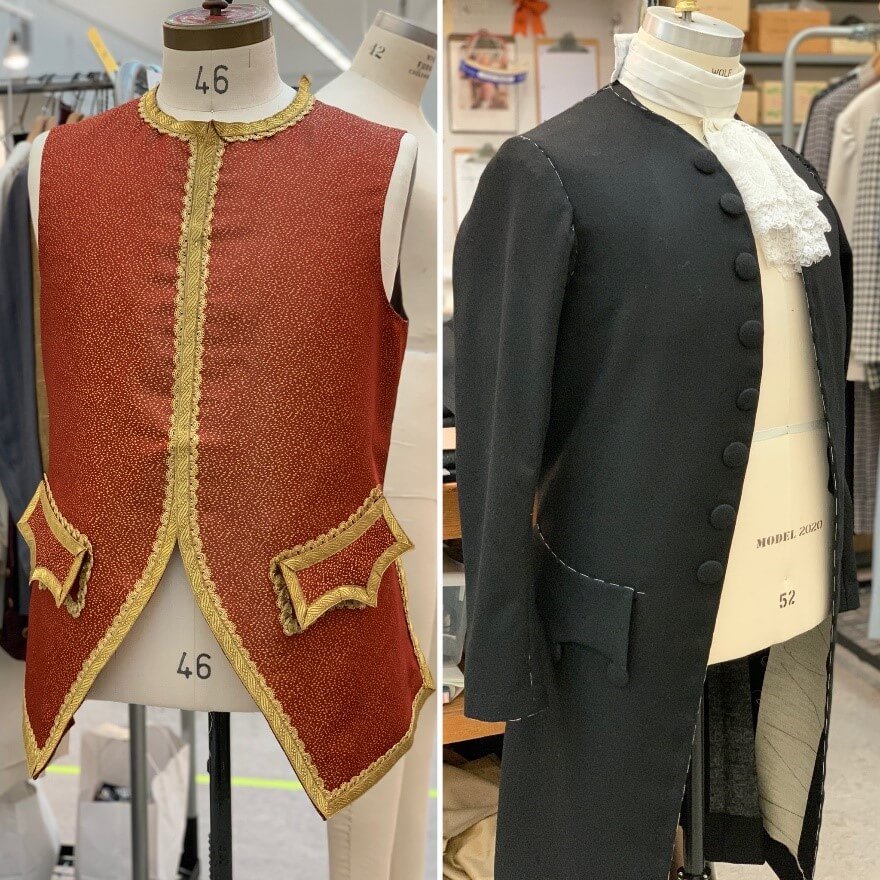
Each character will have two costumes—one being contemporary street clothes, and the other the period costume. Director Matthew Ozawa’s conception is that singers are coming back into an opera house shuttered by the pandemic (in fact, our own War Memorial Opera House, represented using moving video screens). The singers will be literally bringing opera back to life, uncovering racks of costumes and shelves of props as we enter a backstage world of rediscovery and preparation. The antics of Barber of Seville will meet with the antics of backstage, and we will gradually see each character getting ready in their costume. It promises to be hilariously funny and deeply heartfelt at the same time —as should all great comedy!
It’s a great pleasure to share these early glimpses of costumes with you —costumes that are coming together on a quicker timeline than anything we’ve done before, but all in the very capable hands of our phenomenal Costume Shop. I cannot wait for you to see their work come to life in just a few weeks’ time as we prepare to raise the curtain on live opera for the first time since the pandemic began. I am so excited to share it with you and, if you’ve not yet purchased your tickets, I urge you to do so soon at www.sfopera.com/barber. It’s going to be extraordinary to see a fully theatrical production once again!

